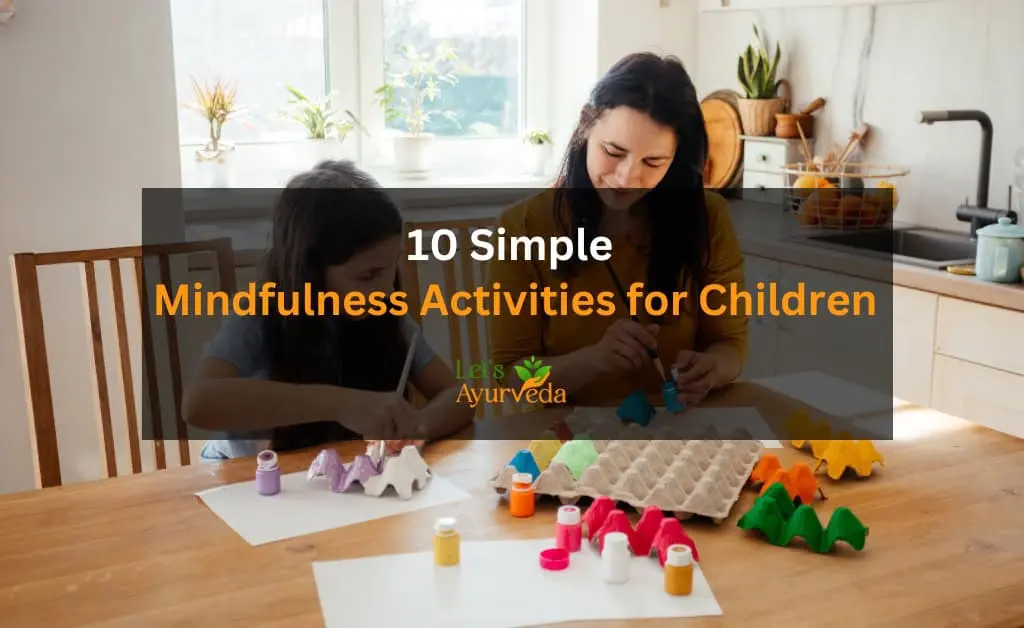Mindfulness is a powerful tool that can benefit children by improving focus, reducing stress, and enhancing overall well-being. The best part? You don't need special equipment or elaborate setups to practice mindfulness with your kids. Everyday surroundings and activities can be transformed into fun and effective mindfulness tools. Here are 10 simple mindfulness activities that use things you already have around the house or in your immediate environment.
1. Toy Sorting: Focused Play with Everyday Toys
Toys can be a great tool for teaching mindfulness. By sorting toys by color, size, or type, children practice focus and organization.
-
Ask your child to gather a mix of toys, like blocks, cars, or figurines.
-
Encourage them to sort the toys by a specific characteristic (e.g., color or size).
-
As they sort, ask them to focus on the details of each toy—its shape, color, and texture.
Why It Works:
This activity helps children concentrate on a single task while engaging their senses. It also teaches organization skills and can be a calming exercise.
2. Cloud Watching: Observing the Sky
Cloud watching is a relaxing activity that encourages kids to stay present and observe their surroundings.
-
Find a comfortable spot outside where you can see the sky.
-
Lie down with your child and look up at the clouds.
-
Ask them to notice the shapes, colors, and movements of the clouds without judgment—just observation.
Why It Works:
This activity helps children connect with nature and practice mindfulness by focusing on the ever-changing sky. It’s a calming exercise that promotes relaxation and creativity.
3. Listening to Nature: Tuning into Outdoor Sounds
Tuning into the sounds of nature is a simple way to practice mindfulness with your kids, whether in your backyard, a park, or even near an open window.
-
Sit quietly with your child and close your eyes.
-
Set a timer for a few minutes.
-
Ask your child to listen closely to the sounds around them—like birds chirping, leaves rustling, or distant traffic.
Why It Works:
Mindful listening sharpens auditory skills and helps children become more aware of their environment. It also teaches them to focus on one sense at a time, reducing distractions.
4. Leaf Observation: Focusing on Details
A simple leaf can become a powerful tool for mindfulness when you encourage your child to observe it closely.
-
Find a leaf from your garden, a nearby tree, or even a houseplant.
-
Ask your child to hold the leaf and examine it closely.
-
Encourage them to notice its texture, color, shape, and any unique features like veins or edges.
Why It Works:
This activity teaches children to focus on details and appreciate the small things in life. It’s a great way to slow down and enjoy the beauty of nature.
5. Mindful Walking: Feeling Each Step
Mindful walking can be done anywhere—indoors or outdoors. It’s an excellent way for kids to engage their senses and stay grounded.
-
Choose a safe area for your child to walk, like a hallway, backyard, or park.
-
Ask them to walk slowly, paying attention to each step.
-
Encourage them to notice how their feet feel as they touch the ground and how their body moves with each step.
Why It Works:
Mindful walking connects children with their bodies and surroundings, helping them stay present and calm. It’s especially useful for kids who find it hard to sit still.
6. Mindful Scenting: Engaging the Sense of Smell
Using everyday smells can be a great way to introduce mindfulness to children.
-
Gather a few items with distinct scents, like an orange peel, a flower, or a bar of soap.
-
Ask your child to close their eyes and take a deep breath in, focusing on the scent.
-
Encourage them to describe the smell and how it makes them feel.
Why It Works:
This activity helps children engage their sense of smell and stay present in the moment. It also encourages them to use descriptive language and be more aware of their sensory experiences.
7. Mindful Touch: Exploring Textures
Everyday objects with different textures can be used to help children practice mindfulness.
-
Collect a variety of items with different textures, such as a soft blanket, a rough rock, or a smooth spoon.
-
Ask your child to close their eyes and explore the texture of each item.
-
Encourage them to describe what they feel without looking at the object.
Why It Works:
Mindful touch helps children focus on their sense of touch and enhances their awareness of the physical world. It’s a simple way to bring mindfulness into daily life.
8. Mindful Drawing: Expressing Emotions with Art
Drawing can be a relaxing and mindful activity that helps children express their emotions.
-
Give your child some paper and crayons or pencils.
-
Ask them to draw something that represents how they’re feeling at that moment.
-
Encourage them to focus on the process of drawing, rather than the outcome.
Why It Works:
Mindful drawing allows children to express their feelings creatively while staying present. It’s a great way to help them process emotions and unwind.
9. Bubble Blowing: Mindful Breathing in Action
Blowing bubbles is not just a fun outdoor activity—it’s also a great way to teach mindfulness through breathing.
-
Give your child a bottle of bubbles.
-
Ask them to take a deep breath in and then blow out slowly to create a bubble.
-
Encourage them to watch the bubble float away, focusing on their breath as they blow.
Why It Works:
Blowing bubbles requires slow, deep breaths, which helps children practice mindful breathing. It’s a playful way to help kids calm their minds and focus on the present moment.
10. Mindful Listening: Connecting with Music
Music is a universal tool that can be used to practice mindfulness.
-
Play a piece of instrumental music or a calm song.
-
Ask your child to close their eyes and listen carefully to the music.
-
Encourage them to notice the different instruments, rhythms, and emotions in the music.
Why It Works:
Mindful listening to music helps children focus on auditory details and emotions. It’s a soothing way to end the day and can help with relaxation and sleep.
Final Thoughts: Embracing Mindfulness in Everyday Life
Incorporating mindfulness into your child’s routine doesn’t require special tools or complicated exercises. By using simple activities and items from your everyday surroundings, you can help your child develop mindfulness skills that will benefit them for a lifetime. Whether it’s through mindful breathing, cloud watching, or exploring textures, these activities make mindfulness accessible and enjoyable for children.
Start today by choosing one or two of these activities to try with your child. With time, you’ll notice how mindfulness can enhance their focus, reduce stress, and improve their overall happiness.






